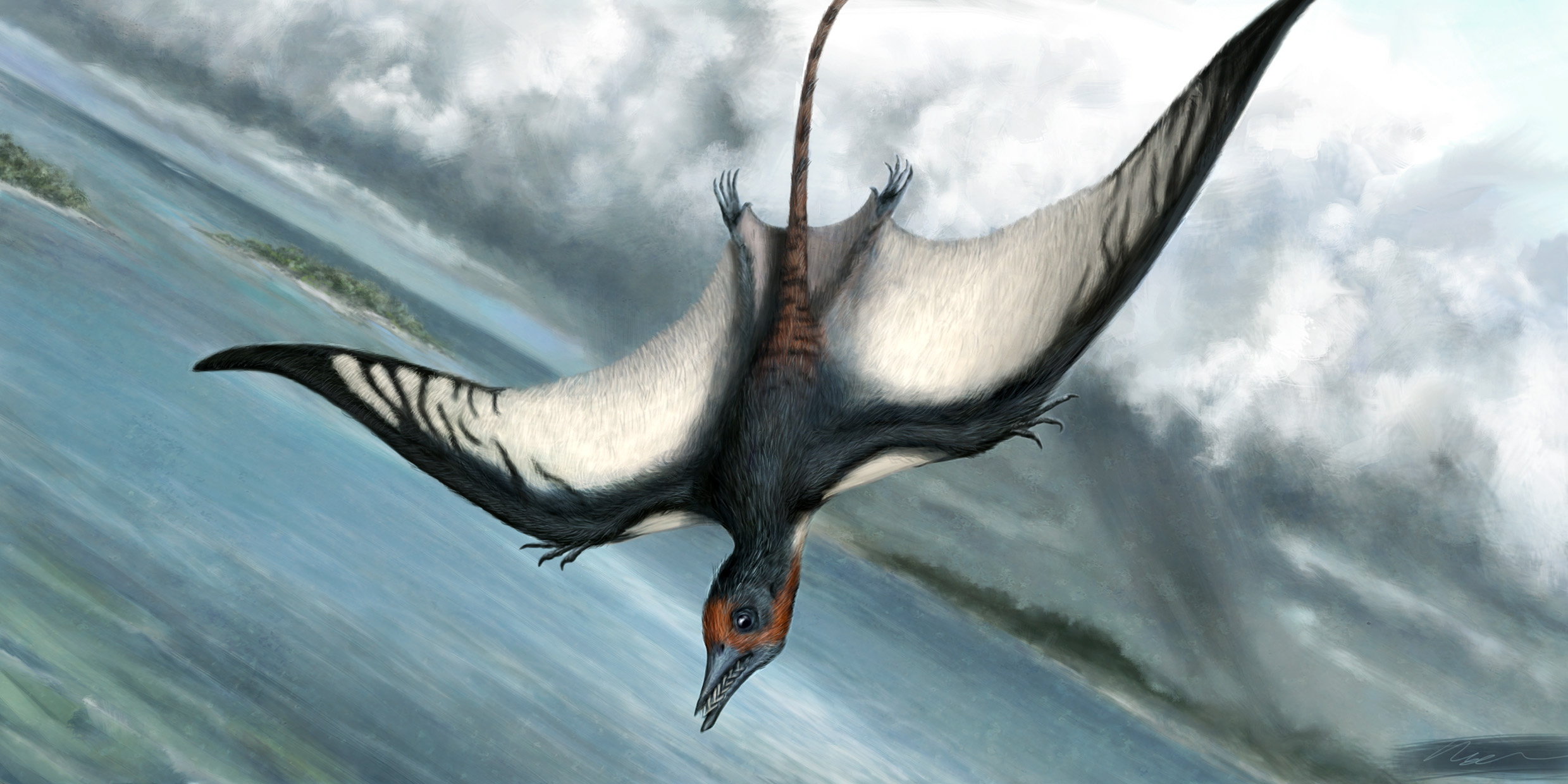Originally published 26 June 1989
The June [1989] issue of National Geographic arrived with a stunning, fold-out poster of dinosaurs.
A herd of “ultrasaurs,” perhaps the largest creatures ever to walk the Earth, moves across a dusty plain. We see only the massive legs of the foreground creatures; the ground seems to quake under their thunderous step. Two rapier-toothed allosaurs run beside the herd, their eyes hungrily fixed upon a young “ultrasaur” at the center of the group.
Such a scene, says the caption, could hardly have been imagined 20 years ago, when dinosaurs were thought to be sluggish, dim-witted, solitary beasts, uniformly brown or gray, the largest of them residing mainly in water like torpid, out-sized hippos. Now we are presented a sociable herd of active, land-dwelling animals, protectively guarding their young. The hides of the agile allosaurs are marked with colorful, yellow, zebra-like stripes. Most surprising of all, to a life-long dinosaur fan, is the flock (is that the right word?) of white pterodactyls that flies with the herd, like snowy egrets.
Not so long ago pterodactyls (or pterosaurs) were thought to be clumsy, cold-blooded, bat-winged reptiles that lurked spookily on cliffs, from which they launched themselves into the air to glide down upon their prey. Today’s revisionist paleontologists believe pterodactyls were narrow-winged, aerodynamic flappers. Hairy, warm-blooded, long-range fliers. Ocean spanners, like the albatross. Probably protectively colored, dark above, white below, for life in the sky. Dinosaurologist Robert Bakker has even imagined a pterodactyl pigmented pink, like a flamingo, by the red algae it strained from the water for its food.
Another myth destroyed
A pink pterodactyl! Pterodactyls in snow-white flocks! Will these paleontologists never tire of destroying the dinosaur illusions of our youth? Whatever became of the nightmarish, hatchet-skulled, leather-winged monster that attacked Fay Wray in King Kong? How could we have gotten things so wrong?
An answer is provided by paleontologist Kevin Padian in an instructive paper delivered at a dinosaur symposium organized by the Natural History Museum of Los Angeles County and included in a two volume record of the symposium called “Dinosaurs Past and Present.”
Padian believes we got the pterodactyls wrong from the beginning. Late in the 18th century the creature was classified as a reptile, and an early fossil specimen was identified as an “aberrant bat.” Once the idea of a bat-winged reptile was fixed in the minds of scientists and the public it endured for 160 years. Says Padian: “Often the earliest reconstruction (of an extinct animal), no matter how limited the evidence on which it is based, exercises a long-range influence on paleobiological restorations — even when new information substantially alters the scientific picture.”
And so it was for the pterodactyl. The first fossil specimen was discovered around 1784 in a limestone quarry of Bavaria, and a sketch was sent to the great comparative anatomist Georges Cuvier in Paris. Without ever seeing the actual specimen he pronounced the curious animal a flying reptile. Although no wing was preserved in Cuvier’s specimen, he guessed that the dramatically elongated finger of the creature’s “hand” supported a wing membrane. He named the fossil animal pterodactyl, “wing-finger”.
The oldest surviving restoration of the pterodactyl is a drawing by the German anatomist Samuel Sömmerring prepared in 1817. To the animal’s skeleton, Sömmerring added the outline of wings, bat-like membranes stretching from the tip of the elongated finger of the forelimb to the foot. Sömmerring’s drawing was adapted by British geologist William Buckland for the widely-read Bridgewater Treatise of 1836 and the die was cast.
Reptile. Bat-winged. Reptiles are cold-blooded, scaly creatures, lacking the charm of flying squirrels or bluebirds. And bats! Nobody loves those nasty little night-flying beasts. Poor pterodactyl, guilty by association with animals with whom it never associated.
The pterodactyl never quite escaped its grim reputation, even though an expanding fossil record did little to support the early interpretations. Sömmerring’s bat-like drawing was reincarnated again and again, at the hands of hundreds of other artists. “A picture is not only worth a thousand words,” says Padian, “However inaccurate, it may be worth a wealth of well-documented evidence to the contrary.”
Seeing and believing
To support his point, Padian makes reference to art historian E. H. Gombrich’s well-known work Art and Illusion. Gombrich used the fantastic representations of lions, locusts, whales and rhinos by artists of the 13th to 18th centuries to demonstrate that the starting point of the unfamiliar is always the familiar. Anatomically incorrect drawings of these animals persisted for centuries, with artists copying the mistakes of their predecessors even when the animals themselves were available for inspection. Something similar happened to the pterodactyl.
The strange case of the bat-winged “flying reptile” teaches a lesson that is relevant to every science. In Padian’s words: “Theory colors perception, and belief is often stronger than observation.”
Now, at last, the vampirish, Dracula-cloaked, cliff-dwelling monster of our childhood exits stage left. Entering on the right is the new pterodactyl, as sleek as a sea gull, spritely colored, warm as toast — and with just a hint of a smile.



